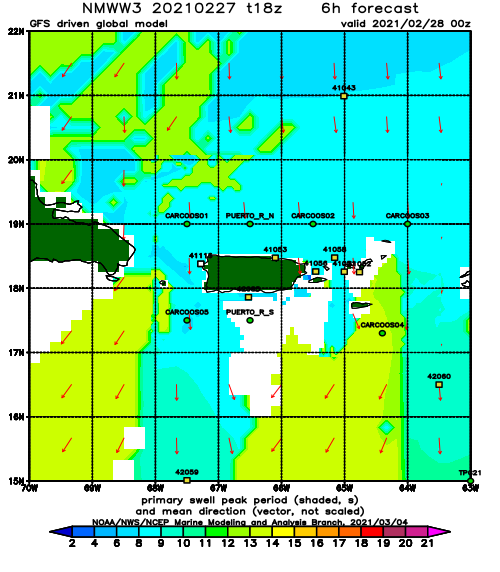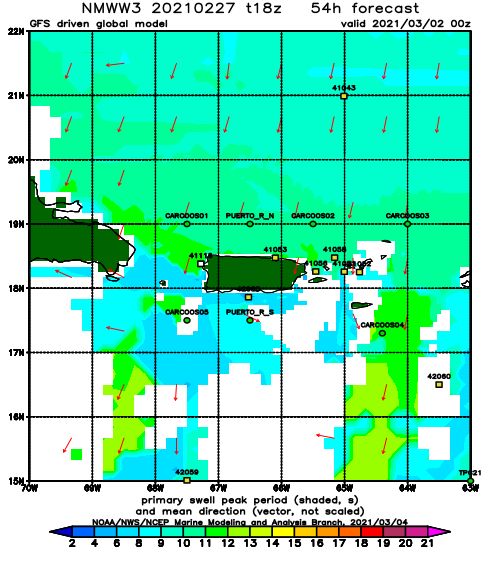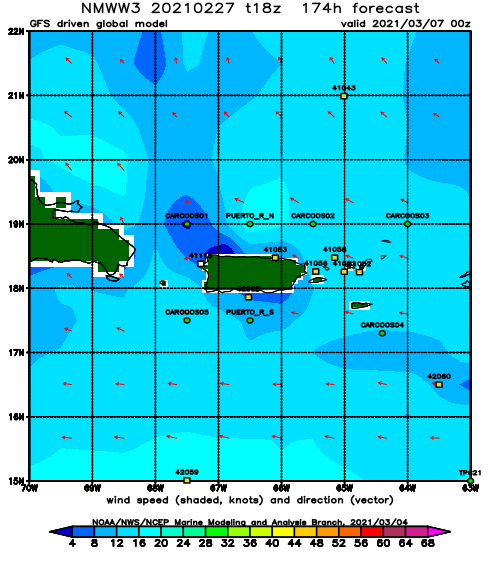Rincon, Puerto Rico Surf Forecast – May 3, 2015

Get Ready to surf!
Unlike last week’s FAIL swell, this coming week is looking like it will pan out. I say this because it’s backed up by live buoy data. The real life data suggests at least two days of surf in the chest to head high range at this time. The forecast models are keeping a waist to chest high wave through the work week. Puerto Rico still has a high pressure force field over it which will keep the weather really hot and put up a fight against the swell and try to push it away again, but I think the setup will only serve to groom the swell as opposed to kill it like this past week. Only time will tell.
Today
NOAA WaveWatch III Wave Model:

Forecast Swell Period:

Forecast Winds:

Sun
NOAA WaveWatch III Wave Model:

Forecast Swell Period:

Forecast Winds:

Mon
NOAA WaveWatch III Wave Model:

Forecast Swell Period:

Forecast Winds:

Tue
NOAA WaveWatch III Wave Model:

Forecast Swell Period:

Forecast Winds:

Wed
NOAA WaveWatch III Wave Model:

Forecast Swell Period:

Forecast Winds:

Thu
NOAA WaveWatch III Wave Model:

Forecast Swell Period:

Forecast Winds:

Fri
NOAA WaveWatch III Wave Model:

Forecast Swell Period:

Forecast Winds:

Sat
NOAA WaveWatch III Wave Model:

Forecast Swell Period:

Forecast Winds:
















